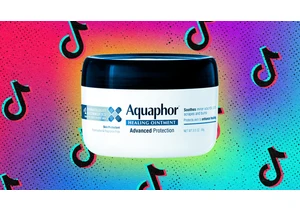New year, new lunar lander: this time, from Firefly Aerospace on its first mission to the moon.
The Blue Ghost Lunar Lander Mission 1, dubbed “Ghost Rider in the Sky,” is set to launch on January 15 atop a SpaceX Falcon 9 rocket from Kennedy Space Center for a 60-day operation to Mare Crisium, a 300-mile-wide basin in the northeast sector of the moon’s near side. The solar-powered lander will deliver 10 NASA payloads that will gather more information about deep space and lunar environments to enable larger, heavier payloads and eventually crewed missions to the moon.
NASA is using the mission “as an opportunity to learn more about the internal structure of the moon and Earth’s magnetosphere, and [to] test technologies that will aid in improving both robotic and human exploration missions to the lunar surface,” says Ryan Watkins, program scientist in NASA’s Exploration Science Strategy and Integration Office. (Catch the launch livestream here and ">here, with mission updates here.)

The science experiments and technology demonstrations will operate during the 45-day journey featuring several orbits around the Earth and moon, and 14 days (or one lunar day) on the surface. They include testing a radiation-tolerant computer and leveraging GPS and similar satellite navigation systems for positioning, navigation, and timing around the moon.
X-ray imaging of Earth’s magnetosphere will gauge how solar wind affects its magnetic field to better inform weather predictions, GPS protection, and satellite connectivity. Stereoscopic cameras will capture the plume interaction upon descent. Subsurface drilling, sample collection and analysis, and measuring local electromagnetic fields will help characterize surface and interior composition and heat flow.
Other payloads will study how lunar dust adheres to various materials and use electromagnetism to mitigate or prevent dust buildup on mechanical components.

“The landing site was chosen because it avoids large magnetic anomalies on the lunar surface that could disrupt some of our payload measurements,” Watkins says.
The mission is part of NASA’s Commercial Lunar Payload Services (CLPS) initiative offering fixed contracts to commercial partners. CLPS awarded Firefly $93.3 million in 2021 (later upped to ">$101 million) to craft the lander—a four-legged vehicle standing 6.6 feet high and 11.5 feet in diameter, with a 340-pound cargo capacity that will shuttle the most payloads for a CLPS mission thus far.
The technologies come from several U.S. space companies and universities and three NASA centers, with contributions from the Italian Space Agency. Firefly will manage the mission from its headquarters in Cedar Park, Texas, near Austin, concluding it by capturing a solar eclipse and a lunar sunset in HD video.
Firefly employees and investor names grace the spacecraft. “To have your name associated with a vehicle that’s going to land on the moon and stay there is quite inspirational,” says CEO Jason Kim.

The space transportation firm was founded in 2017 and is now valued at $2 billion. It has also won CLPS task orders for $112 million to study the radio-quiet far side of the moon in 2026 and $179.6 million to deliver six NASA experiments to the Gruithuisen Domes region on the near side of the moon in 2028.
“It just shows that the private industry, the commercial world, has a lot of affordable, responsive technology and systems that could provide NASA a frequent means to go to the moon and carry out all these high-stakes critical-science missions for lower cost as well as do it sustainably,” says Kim.
Login to add comment
Other posts in this group


Restaurant industry leaders are excited for

Elon Musk’s anger over the One Big Beautiful Bill Act was evident this week a

Welcome to AI Decoded, Fast Company’s weekly new

When artificial intelligence first gained traction in the early 2010s,

You wake up in the morning and, first thing, you open your weather app. You close that pesky ad that opens first and check the forecast. You like your weather app, which shows hourly weather forec

How the Boomer wealth transfer could reshape global finance.
Born too late to ride the wave of postwar prosperity, but just early enough to watch the 2008 financial crisis decimate some
